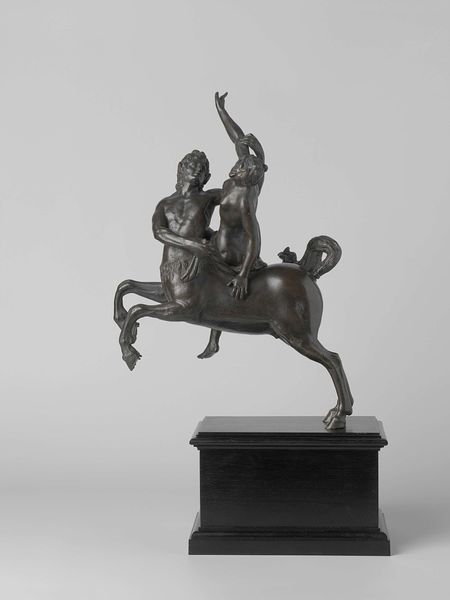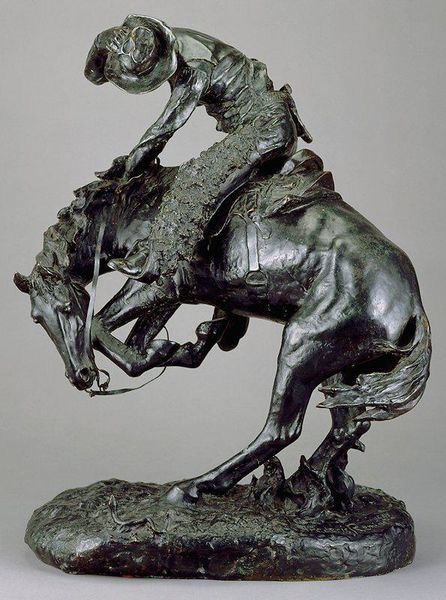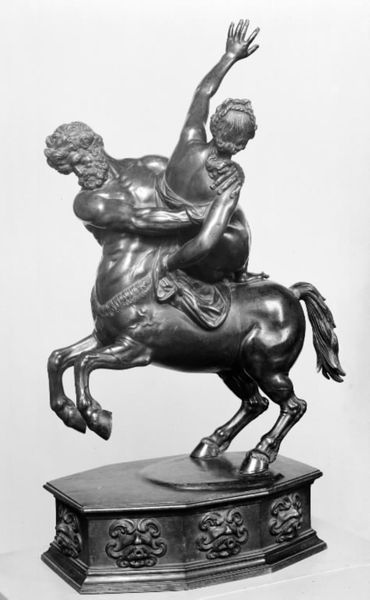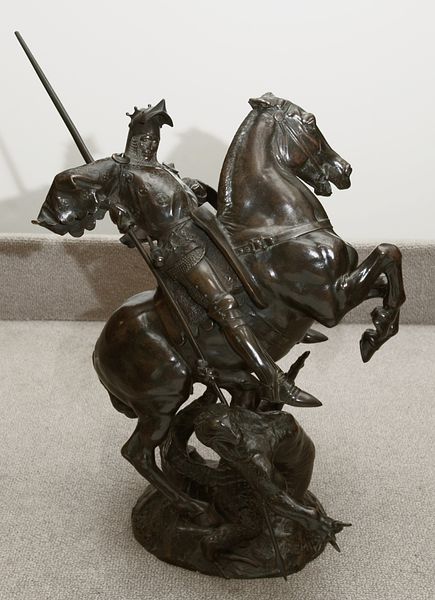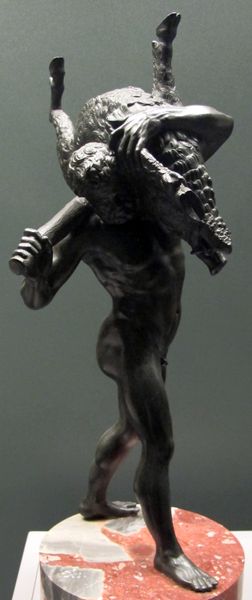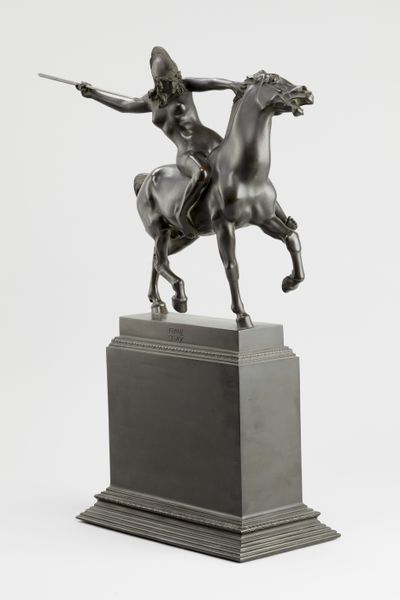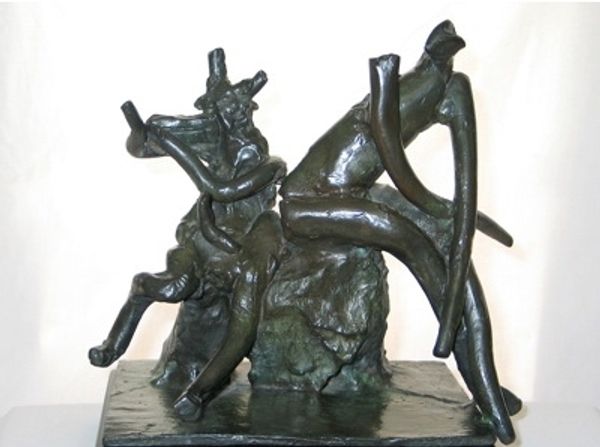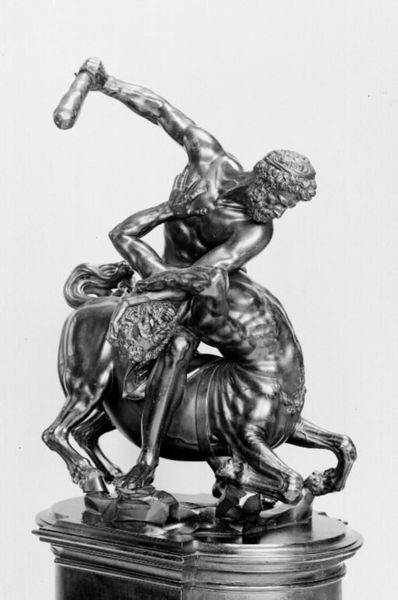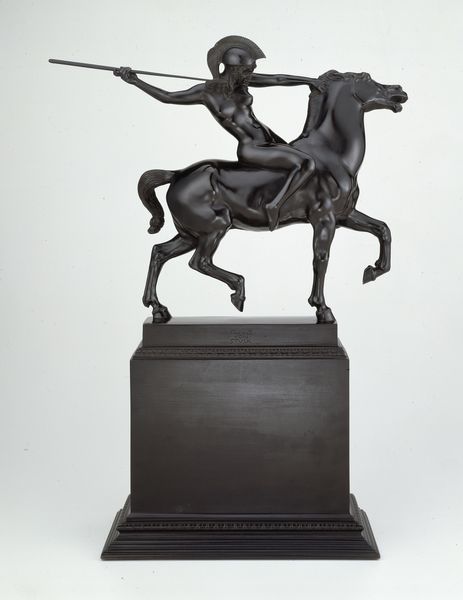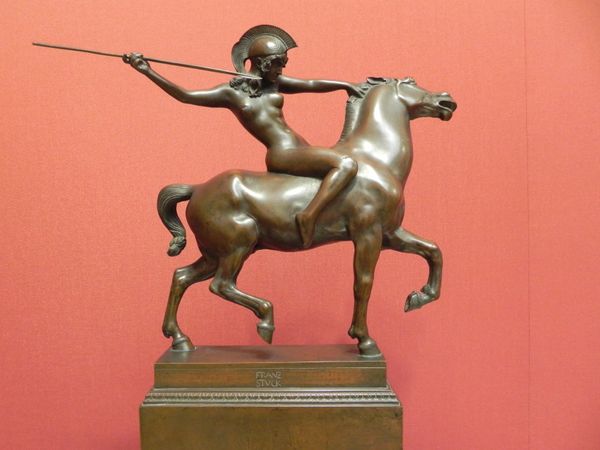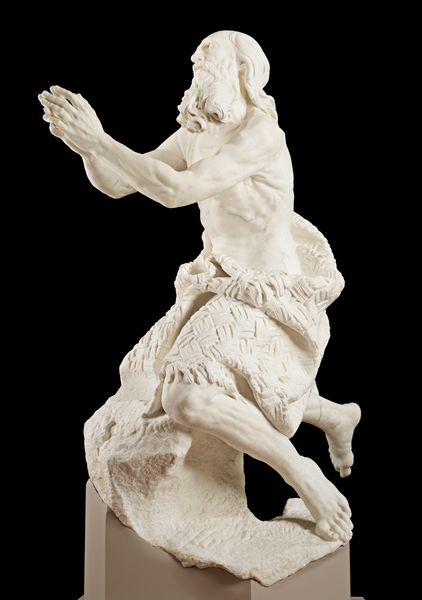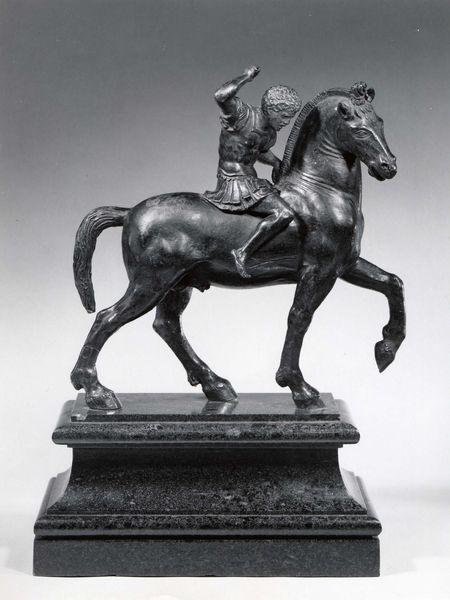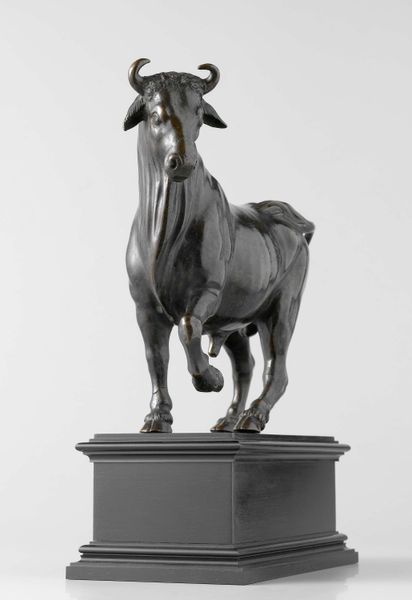
bronze, sculpture
allegory
sculpture
bronze
mannerism
figuration
sculpture
nude
Editor: So, this bronze sculpture portrays ‘Deianira, Wife of Hercules, Abducted by the Centaur Nessus’ by Giambologna. The spiraling composition is wild and a little unsettling! What is your take? Curator: Ah, unsettling is spot on! Giambologna captures that Mannerist flair for drama and twisting forms perfectly. What strikes me most is the implied narrative. Can't you almost feel Deianira’s desperation, reaching for a hope that’s rapidly fading? It’s pure theatre in bronze! What story does it spark for you? Editor: It’s definitely intense. It makes me wonder, beyond the mythological tale, if there's a deeper exploration of power dynamics or the vulnerability of women? Curator: Precisely! It is not *just* mythology. The sculpture exists in this cultural space where women's virtue, and vulnerability were common tropes, making the work a loaded statement. It almost feels like Giambologna is inviting us to question these power dynamics – or, at the very least, sensationalizing them! Do you get a sense that his sculpture empathizes with Deianira’s plight? Editor: Hmmm... I’m not entirely convinced. The centaur has this impressive musculature. I am also drawn to the Mannerist technique of the *figura serpentinata*, but to what avail? I'm torn! I might say that I am unsure whether the sculpture emphasizes more with power and prowess, than any sort of female agency. Curator: Fair enough! See, art always presents more questions than answers. It could well be both—a technical demonstration and a poignant statement of vulnerability. Isn't that the magic of it all? It leaves room for our interpretations, making us active participants in the story. I feel like I understand Mannerism better now, thanks! Editor: Agreed, I learned a great deal today about not rushing to empathy in artistic depictions!
Comments
No comments
Be the first to comment and join the conversation on the ultimate creative platform.
